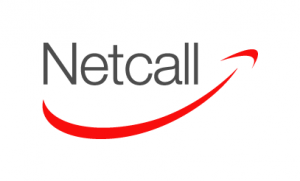4 best practices when moving your contact centre to the cloud – Cloud solutions are an efficient way of delivering seamless omnichannel customer experience. In this article Netcall offer you our 4 best practices for moving your contact centre to the cloud.

1. Choose telephony for you… and your organisation.
When you make contact centre tech decisions there may be a knock on effect for all departments. So, unless you are a standalone unit consider how your choice of telephony will affect others. For example, what will a change in handsets and devices mean to your back-office?
Why not think about:
Call transfers to and from the back-office
Your businesses bring your own device policy (BYOD)
Your need for end-to-end CX. Ask your vendor if they support agnostic integration with other legacy software.
2. Plan for flexible agent skills.
Your agent teams handle different tasks and channels. They will need flexible functionality. Avoid the ‘one size fits all’ trap. It’s will limit your ability to respond to customers and cost you more. Make sure that you are able to meet peak seasonal demand, and then when it’s all over, return to your baseline. Plan for specialised groups of agents that will need extra features.
Ask your provider:
Are more features available as and when agents need them?
Are these features hard linked to agents or transferable between agents?
How are these billed? What about peak demand?
Will the extras be part of a tiered integrated approach?
3. Check data security means the same for you, and your provider.
Data security used to be about how your team uses and stores data. Yet, you may share some of the data with third parties. Other departments may access data connected to your contact centre systems. Now, it’s about how they access your data in the cloud. If you have outside 3rd party customers this challenge becomes greater. (Such as outsourcers or contractors)
We recommend that:
You map the data compliance for each touch point within your cloud deployment
Confirm with your Data Compliance Officer that your new plan has their approval.
4. Rethink your resilience and stability plans.
A. Business continuity
On-site systems have well-developed resilience and stability plans. When you move to the cloud, the issue of resilience takes on a new emphasis. Take steps to protect yourself against a single point of connection failure. Also consider the routing you use for data and telephony between your cloud provider and your sites. Poor transport link routing introduces latency (delays) which affects performance. Be careful that you don’t compromise data packet transport with your business continuity routing.
B. Performance monitoring in real-time is essential
When your systems are on-site checking data traffic is irrelevant. In the cloud you need to watch the flow of data traffic to see when delays happen. You need real-time visibility to follow performance along the whole route. Track each step of the route and track provider SLAs. Avoid being performance blind. Measuring “what’s happening” and “where” keeps you informed of any delays or downtime.
For best performance and resilience:
Watch data as it exits your service provider cloud site and on each transport link between the sites
Check what happens as data crosses your perimeter and firewall
Plan the best number of data and telephony links between you and the outside world
Design your connection to minimise latency and unintended consequences.
 Additional Information
Additional Information
For additional information on Netcall visit their Website




